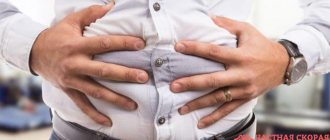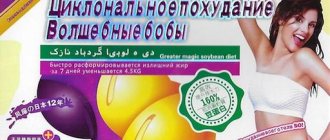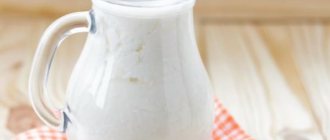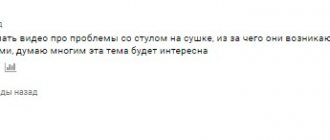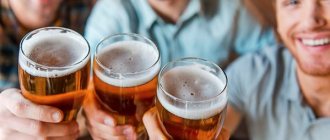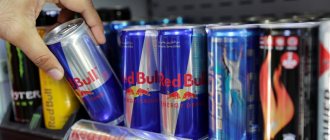Finding information about whether you can drink alcohol while following a diet is difficult. You have to rack your brains in search of answers to questions regarding drinking alcohol, losing weight, and effective training. Especially many questions arise when you want to drink and not harm your figure, i.e. looking for the lowest calorie alcohol.
Consider drinking alcohol while dieting – a key challenge. There will also be a table from which you can find out how many calories and what kind of alcohol it contains.
Is it possible to drink alcoholic drinks and cocktails while losing weight?
There can be no question of an unequivocal ban on alcohol consumption for those wishing to lose weight. But its consumption should be kept to a minimum, since exceeding the dose will harm the process of losing excess weight. This is connected not so much with the calorie content of alcohol, but with its effect on the body.
Important! The common belief that there is diet alcohol is completely wrong. All alcohol contains calories. You just need to choose the lowest calorie alcohol.
Alcohol is not good for weight loss
Let's figure out why you shouldn't drink while losing weight. Alcohol has a suppressive effect on the functioning of the cortex and subcortical areas of the brain. These areas are responsible for volitional behavior, the ability to think critically and make decisions. After drinking alcohol, the ability to control thinking and actions is impaired, which is why instinctive behavior is disinhibited - aggression appears, libido and the feeling of hunger increase. Therefore, being intoxicated, you can easily eat too much.
Alcohol is dangerous even the day after consumption. This is due to the formation of a hangover syndrome - many people experience a pronounced feeling of hunger. The condition develops due to individual characteristics of dopamine metabolism in the brain.
Alcoholic products contain a certain amount of calories. At the same time, each one is individual. It is a mistake to think that vodka is the lowest calorie alcohol. It contains a supply of calories almost equal to that of bread. This is due to the high calorie content in the alcohol from which vodka is produced. In a number of other alcoholic products, the calorie content is determined not only by the amount of alcohol in them, but also by the presence of impurities. This is especially true for cocktails.
Be sure to check out: Diet cabbage salad: the best recipes Safe cleansing: flax seeds for weight loss Kefir on a diet: are alternatives possible Proper castling: how to replace high-calorie treats and allergenic foods on a diet
Drinks with an insidious character
There is no harmless alcohol. However, there are drinks that have a greater detrimental effect on the body:
- Energy drink + alcohol. Alcohol is a psychoactive substance, as are caffeine, taurine and other components of energy drinks. The components enhance each other's effect. Therefore, such a tandem “blows the roof away.”
- Cocktails. These drinks have the following property: you can drink two or three glasses of them, everything will be fine. However, after 15-20 minutes the person suddenly becomes drunk. This happens under the influence of a psychological factor: people do not perceive cocktails as full-fledged alcohol. After all, it contains not only alcohol, but also a lot of juice. And also for a physiological reason: the alcohol in this drink affects the brain slowly and tends to accumulate, after which sharp intoxication occurs. In addition, cocktails are insidious in that they are usually not eaten.
- Beer. It has the same properties as cocktails: it accumulates in the body and only then begins to act on the brain. The foamy drink is usually eaten as a snack. This is the only thing that smoothes out the harmful influence. Since beer is a low-alcohol product, it is drunk in large quantities. You should know that three cans of the drink are equal to a glass of vodka.
- Champagne. It contains carbonic acid. It irritates the gastrointestinal mucosa and causes heartburn. A glass of alcohol is enough to make you drunk: the irritated stomach and intestines absorb ethanol faster. After this, a negative effect on the blood vessels occurs, and a migraine appears.
Should you drink alcoholic beverages when doing sports and fitness?
Drinking alcoholic products while playing sports is definitely not recommended. Below are reasons why you should not drink when losing or gaining weight:
- alcohol disrupts the functioning of the cortex and subcortex;
- alcohol (especially strong) disrupts the absorption of nutrients;
- alcohol interferes with the formation of protein molecules necessary for muscle growth;
- alcoholic products negatively affect the production of gastric juice, which is why food cannot be fully absorbed;
- alcohol destroys the cells of the pancreas, which secretes enzymes necessary for digesting food;
- when absorbing ethyl alcohol, fat burning processes are disrupted;
- for the absorption of alcohol, a significant amount of enzymes that bind it is necessary, the release and operation of which requires effort from the body;
- Alcohol negatively affects the state of the nervous system and heart.
Important! Each person has their own sensitivity to alcohol, which is why the negative effects of drinking vary from person to person. Therefore, drinking alcohol, even the lowest calorie one, is not recommended.
Concept of compatible dose
This refers to a dose at which the harm from use does not exceed the benefits. Despite all the disadvantages, drinking alcohol can have a positive effect on your health:
- blood pressure decreases;
- blood flow in vessels, especially small ones, increases;
- the transmission of nerve impulses accelerates;
- metabolism increases, etc.
Important! Only high-quality alcohol in small quantities can bring benefits. In other cases, alcohol harms the body.
Consuming alcohol-containing products at a compatible dose will allow you to drink profitably. Especially in situations where it is impossible to refuse. However, the compatible dose is individual for everyone.
Calorie content of alcoholic drinks
The calorie content of alcoholic beverages is especially important to know when the weight loss technique involves calculating daily calorie intake and is not limited to a certain set of foods.
Calories in alcohol and amount of carbohydrates per 100 g of finished drink:
- Vodka 40% – carbohydrates 0.0, 235 kcal;
- Brandy 40% – carbohydrates 0.5, 225 kcal;
- Whiskey 40% – carbohydrates 0.0, 220 kcal;
- Gin 40% – carbohydrates 0.0, 220 kcal;
- Cognac 40% in – carbohydrates 0.1, 239 kcal;
- Rum 40% – carbohydrates 0.0, 220 kcal;
- Punch 26% – carbohydrates 30.0, 260 kcal;
- Liqueur 24% – carbohydrates 53.0, 345 kcal;
- Port wine 20% – carbohydrates 13.7, 167 kcal;
- Sherry 20% – carbohydrates 10.0, 152 kcal;
- Madera 18% – carbohydrates 10.0, 139 kcal;
- White dessert wine 13.5% – carbohydrates 5.9, 98 kcal;
- Vermouth 13% – carbohydrates 15.9, 158 kcal;
- Dry white wine 12% – carbohydrates 0.2, 66 kcal;
- Red wine 12% – carbohydrates 2.3, 76 kcal;
- Beer 4.5% – carbohydrates 3.8, 45 kcal;
- Beer 1.8% – carbohydrates 4.3, 29 kcal;
- Alcoholic “Mojito” cocktail – carbohydrates 5.3, 52 kcal;
- Brut champagne – carbohydrates 1.4, 70 kcal.
The calorie content in any diet, depending on physical activity, ranges from 1500 to 1800 kcal, which means that including several servings of alcohol in the menu without going beyond the calorie limit is quite possible. One serving of alcohol is contained in a glass of wine, 0.33 light beer or 25 ml of a drink with a strength of 40%. The daily norm recommended for men is 3-4 servings of alcohol, for women – no more than 1-2 servings.
Does alcohol contribute to weight gain?
Excessive alcohol consumption contributes to weight gain - another reason why you should not drink while on a diet. Alcohol also leads to dehydration. Not only water reserves are lost, but also nutrients necessary to maintain metabolism at a stable level.
Weight gain when dehydrated occurs due to:
- A compensatory mechanism for weight gain - after the loss of water and nutrients, with their subsequent normal supply, a reserve is created in case of a recurrence of a dangerous situation. Reserve reserves are formed due to fat deposits.
- Reducing metabolic activity due to liver dysfunction is the most dangerous process.
Your Narcologist recommends: note
Red wine in the amount of one glass not only does not harm the figure, but also has a good effect on the body:
- cleanses blood vessels from cholesterol plaques;
- improves blood circulation;
- normalizes intravenous pressure;
- expands the lumens of blood vessels.
Red wine is slowly absorbed into the circulatory system. It is often used for medicinal purposes.
The effects of different drinks on the body
Alcohol products affect the body differently - the effects of strong alcohol differ significantly from the effects of beer. This is due to the difference in composition. But the general principles of their impact are similar.
Vodka and other strong alcohol
Strong alcoholic drinks are also the highest in calories. The reason is a significant proportion of ethyl alcohol in their composition. They negatively affect the processes of weight loss (gain of fat deposits, decreased metabolism) and muscle growth.
The harm of strong alcohol to muscles is due to:
- destruction of protein molecules;
- decreased activity in the formation of new protein structures;
- disruption of the processes of absorption of nutrients from food;
- damage to nerve cells.
Wine: white, red, dry, fortified
When on a diet, it is best to drink wine. This is the best option for an athlete. Wine is not only the lowest calorie product, but also alcohol, which in moderate doses has a beneficial effect on the cardiovascular and digestive system.
Let's look at what kind of wine you can eat on a diet. The best option for an athlete or someone simply wanting to lose weight is red wine, especially dry wine. It is the least caloric among all wines and at the same time is not devoid of beneficial properties.
Important! Although it is now known which wine is best to drink on a diet, its excessive consumption causes significant harm to the body in conditions of a lack of calories.
It is allowed to drink dry red wine if you have stomach diseases in an inactive stage or problems with blood pressure. It can increase the levels of adrenaline and dopamine in the body. But you need to drink no more than 1 glass per day. Also, dry red wine at night will help you relax and fall asleep.
Beer
Let's figure out whether you can drink beer or not while on a diet and, in general, playing sports. Contrary to popular belief, hop product is the lowest calorie alcohol. This is due to the low content of ethyl alcohol in it. It also has a pronounced effect on the kidneys, which is why it is quickly excreted from the body.
Beer and weight loss don't mix
Although this is the lowest calorie alcohol, it cannot be consumed while following a diet. The reasons are the composition of the drink and the tradition of its use. The intoxicating product is prepared from components that negatively affect the figure, especially the stomach.
The drink contains a significant amount of plant analogues of female sex hormones. Their regular intake into the body leads to an increase in the proportion of fat deposits. Also, when consumed, the production of testosterone, the hormone responsible for muscle growth, is disrupted.
Useful tips for losing weight “gourmets” of alcoholic beverages
In order to lose weight, while not forgetting about the taste of alcoholic drinks, certain rules are specifically provided. If you adhere to them, then alcohol, again in limited quantities, will not interfere with the correction of a problematic figure. So:
- The calorie content of sparkling wine and sparkling cocktails is off the charts, so you should exclude them from your diet menu. It is important to remember that soda in combination with alcohol only increases its nutritional value.
- You can’t drink beer or wine to the bottom at the table; it’s best to stretch out the pleasure of one glass for the whole evening, as long as you have enough patience. This is a more or less worthy option, how to avoid being the “black sheep” at the holiday.
- Both vodka and beer should be enjoyed. It is advisable to choose lean meat varieties for snacks, since such a “duet” noticeably slows down the absorption of ethanol into the blood, reducing the calorie content of the selected drink. That is why the table should not be empty, and drinking on an empty stomach is harmful to your figure and health.
- Before starting the feast, it is recommended to drink a couple of glasses of boiled water to start digestion and make alcohol less aggressive for your own body. By the way, this is an effective remedy to prevent alcohol intoxication.
Dry wine can safely be called dietary
- It is very important to monitor the calorie content of each alcoholic drink, and choose only “dietary products”. This is very important so that you don’t ask later why the diet didn’t help.
So you can have a drink at the table, the main thing is to know the measures and put into practice the proposed secrets of a slim and impeccable figure. Otherwise, the appearance leaves much to be desired, and abuse of high-calorie alcohol leads to problems with the skin, digestion and central nervous system.
We are looking for the lowest calorie drinks: table of alcohol with calories
To lose weight, you must constantly maintain a calorie deficit in the body. Otherwise, the diet will be of no use. The following table will let you know how many calories are in alcoholic drinks:
| Drink | Calorie content (kcal per 100 g) |
| Guilt | |
| Semi-sweet white | 70 |
| Semi-sweet red | 66 |
| Sweet vermouth | 170 |
| Dry vermouth | 145 |
| Semi-sweet red | 80 |
| Dry red | 67 |
| Muscat | 160 |
| Pink sweet | 73 |
| Red sweet | 132 |
| Liqueurs | |
| Amaretto | 280 |
| Baileys | 327 |
| Coffee | 228 |
| Strong alcohol | |
| Brandy | 227 |
| Vodka | 234 |
| Gin | 225 |
| Cognac | 240 |
| Rum | 228 |
| Tequila | 210 |
| Whiskey | 250 |
| Beer | |
| Zhigulevskoe | 37 |
| Light (the proportion of dry matter in the wort is 11%) | 42 |
| Light (the proportion of dry matter in the wort is 20%) | 75 |
| Dark (proportion of dry matter in the wort 13%) | 40 |
| Light (the proportion of dry matter in the wort is 20%) | 74 |
| Non-alcoholic | 37 |
The lowest calorie alcohol on the list is beer. But since it is consumed in liters, with the usual portion you can consume an excessive amount of calories. For example, 0.5 liters of Zhigulevsky contains 203.5 kcal.
It is best to use dry red wine, since it is a product with a minimum calorie content and causes the least harm.
The dangers of alcoholic cocktails
Particular attention should be paid to alcoholic cocktails, which are considered low-alcohol drinks, but are often high in calories. Mixed drinks have more calories than beer or wine.
Multi-ingredient cocktails are very popular and, due to their calorie content, can successfully replace dessert. Bartenders are constantly coming up with new and original concoctions, such as chocolate martinis or hot rum cocktails, to surprise sophisticated regulars. These drinks with chocolate, syrup, sugar and other confectionery ingredients contain a lot of calories.
So in 100 g of “Mojito” there are already 95-100 kcal, in “Pina Colada” there is even more - 230 kcal. The Long Island Ice cocktail has the same energy value as liqueur - 345–350 kcal per 100 g. The Bloody Mary cocktail (vodka with tomato juice) contains 80 kcal per 100 g. With this indicator, this drink along with “ Mimosa" and "Screwdriver", which generally have only 65 kcal per 100 g, can easily be called one of the lowest-calorie alcoholic cocktails. You can also include wine and soda here - 70 kcal per 100 g. But a cocktail of rum with diet Coca-Cola breaks all records for low energy value - 45 kcal per 100 g of drink.
See also: Liver problems - get an ALT test
The lowest calorie alcoholic cocktail can be made even less calorie by asking the bartender to add ice or dilute the drink with water. You can also alternate between alcohol and non-alcoholic drinks.
Now that the indicators of alcoholic calories have been clarified and the winners in the category of the lowest-calorie alcoholic drinks have been determined, it will become easy to plan how much and what kind of alcohol to drink at celebrations and parties.
For those who are watching their weight and slim figure, it will be useful to use the knowledge of which alcohol is the lowest in calories in order to remain beautiful and elegant throughout their lives, feel light in the body and positive in the mood.
What can you drink and how to replace alcohol?
The lowest calorie alcohol with the best effect on the body is wine. It is recommended to replace the rest of the alcohol. An alternative to beer is water or unsweetened juice, and strong alcohol is green tea or pu-erh. Wine will be replaced by milk or protein shakes.
Is non-alcoholic beer healthier than regular beer?
Regular beer, like non-alcoholic beer, uses the same components - water, malt, hops, barley, yeast. The only difference is the extremely low alcohol content in the non-alcoholic product.
The minimum alcohol content in non-alcoholic beer is achieved in the following ways:
- preventing or interrupting fermentation by using yeast that does not process barley sugar, or by sudden cooling, which destroys the yeast;
- evaporation of alcohol by heating the drink;
- membrane filtration - alcohol is captured by special filters.
Important! By drinking non-alcoholic beer, the athlete is not exposed to alcohol. But the athlete’s body is influenced by the same factors as when consuming a regular intoxicating drink - plant analogues of hormones, calorie content, etc.
Counting calories in alcoholic beverages
Some alcoholic drinks (such as wine) do not contain many calories if consumed in moderation. However, not everyone knows when to drink in moderation and often abuses it.
Any alcohol-containing product in large volumes can add extra pounds. In addition, drinks with a degree of alcohol cause appetite. To avoid gaining weight, you need to count your calories every day.
The American Journal of Medical Nutrition ranked alcoholic beverages second in nutritional value after calorie-sweetened beverages.
Do not forget that alcohol also provokes the development of various diseases that provoke obesity (for example, liver pathologies, diabetes, problems with the cardiovascular system, etc.).
Main conclusions
- The lowest calorie alcohol is beer.
- Red wines are in second place in terms of calories.
- The most high-calorie drinks are liqueurs (except coffee) and cognac.
- Despite the fact that beer is the lowest calorie alcohol, you should not drink it while losing weight.
- The stronger the alcohol, the more calories it contains.
Drinking alcohol, even if it is the lowest in calories, negatively affects weight loss and muscle gain. Therefore, if possible, you should give up alcohol.
How do you feel about drinking only the lowest calorie alcohol? Do you think its effect on metabolism is significant?
TOP 10 low-calorie alcoholic drinks
List of alcoholic low-calorie drinks:
- light beer contains the least amount of calories;
- dry wine contains tannins (they slow down the absorption of alcohol in the gastrointestinal tract);
- semi-dry wine;
- dry champagne (the gases contained in it have an adverse effect on the body);
- semi-sweet wine;
- dark beer;
- sweet wine;
- semi-sweet champagne;
- vodka, cognac, whiskey, brandy;
- liqueur and cocktails containing it significantly harm the figure (the dyes and shock absorbers included in the composition slow down metabolic processes and have a bad effect on the liver).
The lowest-calorie alcohol-containing drinks can also add extra pounds if consumed in large quantities. Therefore, even light beer should be drunk no more than one glass and not daily.
